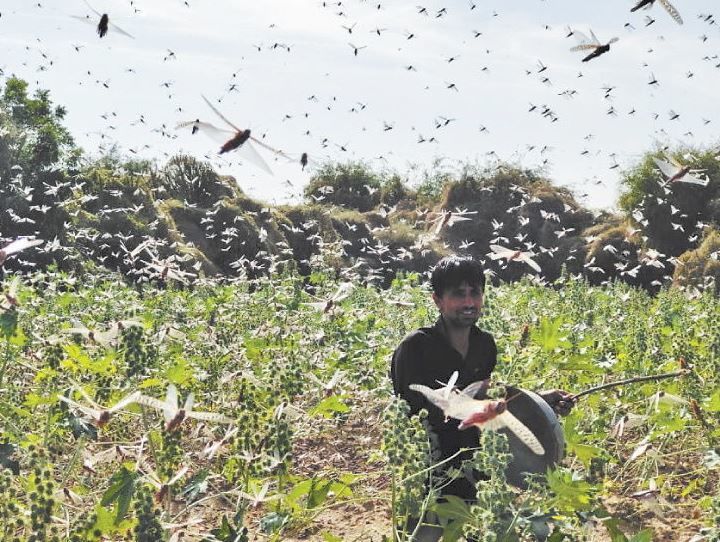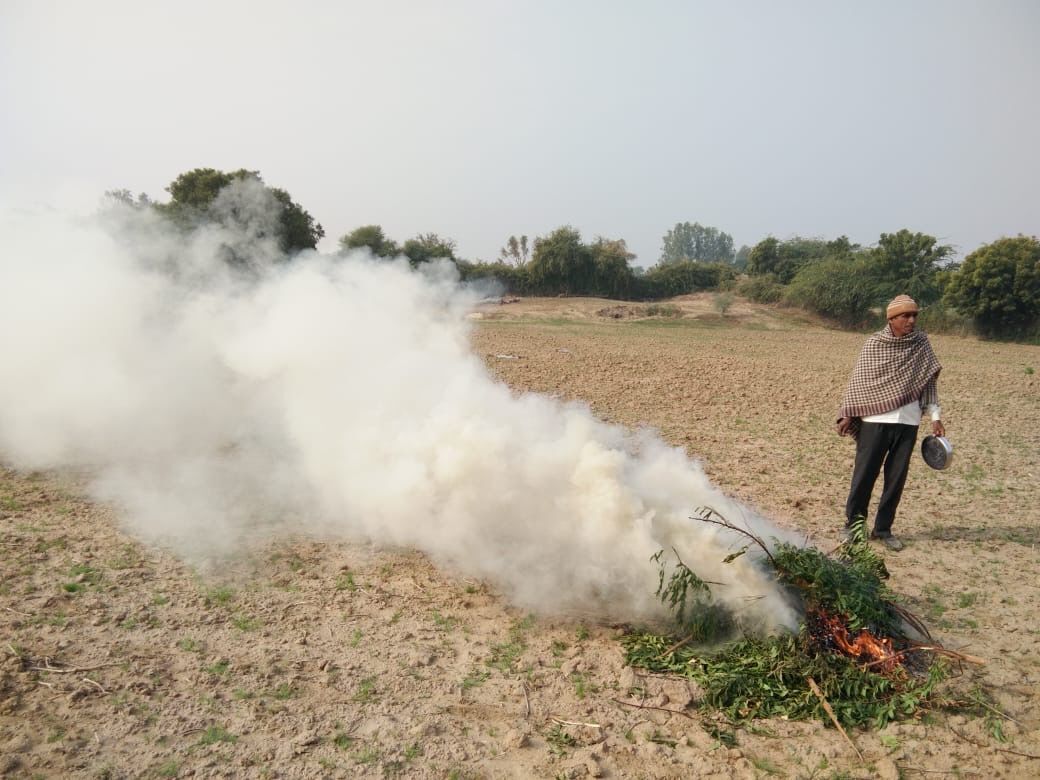Farmers worried as a severe locust attack destroys crops in Rajasthan, Madhya Pradesh, Uttar Pradesh
The country is battling the desert locusts in the heartland states of Madhya Pradesh, Rajasthan and Uttar Pradesh. Gujarat and Punjab have also warned the farmers of locust attacks


Locust swarms destroy several hectares of crops within a day
Lucknow, Uttar Pradesh
The woes of farmers don’t seem to be ending. First, unfriendly weather conditions damaged their crops, then they incurred heavy losses as due to the nationwide lockdown they were not able to sell their produce. And now, the country is battling the desert locusts in the heartland states of Madhya Pradesh, Rajasthan and Uttar Pradesh. Gujarat and Punjab have also warned the farmers of locust attacks.
In Rajasthan, 16 districts are affected, in Uttar Pradesh, 17; and Madhya Pradesh has reported one of the worst locust attacks in 27 years. As per the agriculture experts, locusts will be attacking Uttar Pradesh after two decades. The Department of Agriculture has issued an alert across the state. The locust swarms could make headway to the Rajasthan-Haryana border and then enter to Delhi.
The desert locust is one of the 12 species of short-horned grasshoppers. Locusts swarms can travel up to 130 km in a day and each locust can consume about two grams of fresh vegetation.
In Uttar Pradesh, a swarm of locusts has already entered Jhansi through Madhya Pradesh. Districts like Jalaun, Lalitpur, Hamirpur, Etawah and Kanpur Dehat are on high alert. At the same time, yet another swarm is likely to move beyond Jaipur to Agra and Mathura districts. In view of the locust outbreak, vigilance has also been beefed up in the districts of Saharanpur, Shamli, Meerut, Muzaffarnagar and Baghpat.
This is the second round of locust attack in India after the December-February period when teams were deployed to spray organophosphate to kill the pests. Scientists have attributed the second round to a number of cyclones in the Indian ocean that hit a sandy area in the Arabian Peninsula, which created breeding conditions for the locusts.
Locusts attacks in India usually last till November but this year the swarms stayed till February which scientists believe was due to the climate crisis.
Dr KL Gurjar, the deputy director of the Locust Warning Organisation (LWO), said: “So far, there has been an outbreak of locusts in parts of Rajasthan and Gujarat. Locusts from Pakistan come here every year. But, this time, the locusts have reached Madhya Pradesh and are reported to be further reaching Uttar Pradesh as well. Earlier, in 1993, locusts had caused major damage in parts of Madhya Pradesh and Uttar Pradesh. They are back after so many years.”
In view of the outbreak of locusts in Rajasthan, Madhya Pradesh and certain areas of Punjab/Haryana and the possibility of Uttar Pradesh invasion, the Department of Agriculture, Uttar Pradesh has held a meeting with district magistrates and agriculture and other departments of all the districts.
Agriculture Minister Surya Pratap Shahi pointed out: “The districts where locusts are likely to come through Rajasthan and Madhya Pradesh have been alerted by meeting with the district magistrate and agriculture officials through video conferencing. All have been instructed to be prepared in advance and also to talk to the farmers. The district authorities have been instructed that there should be adequate spraying of medicines. People will be able to avoid harm only if they are already alert.”
Deputy agriculture director (crop protection) VK Singh informed: “A locust swarm is likely to arrive in Jhansi. Another swarm which has taken off from Dausa (Rajasthan) has reached Karauli (Rajasthan). It is likely to reach Morena and Gwalior as per the prevalent wind direction. The officials of Bundelkhand districts like Jhansi, Jalaun and Hamirpur have been instructed to remain vigilant and remain on high alert to kill the locust swarm.”
The news regarding the outbreak of locust swarm has been directed to reach to the farmers through gram pradhan, lekhpal, technical assistants of the Department of Agriculture and gram panchayat officer. To ward off the locusts, loud noise may be made by banging thalis, drums and using loudspeakers, etc.

Guidelines for farmers
The locusts do not eat the crop sprayed with 40 ml of neem oil with 10 grams of detergent in 10 litres of water.
To immobilise the swarm of locust, spread 100 kg of paddy husk in the field with 0.5 kg of fenitrothion and five kilos of jaggery in the field, the locust dies from its poison.
Spray chlorpyrifos at 20 per cent EC 1200 ml or deltamethrin 2.8 per cent EC, 625 ml or malathion 50 per cent EC 1850 ml per hectare.
The locust team always lays eggs in the sandy soil, so the farmers should plough the fields deeply and drench them well with water. This will destroy locusts’ eggs automatically.
Farmers can spray chlorpyrifos 20 per cent or lamda cyhalothrin five per cent.

Last time the biggest locust attack was in 1993
As per the Locust Control and Research Department of the Government of India, the biggest ever attack of locusts had occurred in 1993. That year, locust swarms had attacked and damaged crops and vegetation, about 172 times. The department had treated about 3.10 lakh hectares of land in 1993. Earlier, from 1964 to 1989, 270 times in different years, locust swarms had turned to India. In 1968, 167 times locust swarms had come to Rajasthan and Gujarat. From May 2019 to February 2020, more than 2,000 locust swarms had entered India. Since April 11, eight swarms have already arrived. This time, as locusts continue to come, no exact assessment has been made so far as to how many swarms will reach.
Locusts can cause starvation
Locust has always been like a curse for mankind. Because of their attacking in an army of millions, their destruction capacity is very high. Locust swarms destroy several hectares of crops within a day. On average a small swarm of locusts can consume the equivalent of ten elephants, 25 camels or 2,500 individuals in a day. Locust eats leaves, flowers, seeds, stems and growing plants. The effect of locusts’ outbreak lasts for several years. Due to excessive consumption, locusts ruin the entire crop cycle due to which production is low and starvation a possibility.

